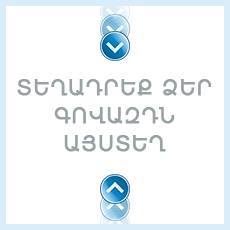Դիպլոմային Grammatical Problems of Translation
Բովանդակություն
Chapter 1.
1.1.Grammatical Problems of Translation
1.2.Definite, Indefinite, Zero Articles
1.3.Legal texts and peculiarities of their translation
Chapter 2
2.1. The Definite Article in Armenian and in English
2.2 The Use of Articles in Legal Contexts
2.3. Translation of Articles on example of Convention
Conclusion
Հատված
Although the practice of translating is long established, the study of the field developed into an academic discipline only in the second half of the twentieth century. Before that, translation had normally been merely an element of language learning in modern language courses. Though there have been many serious attempts to arrive at a unified theory of translating, linguists and translation theorists are still in doubt about such a possibility. According to Catford, “the theory of translation is concerned with a certain type of relation between languages and is consequently a branch of Comparative Linguistics”. He defines translation as “the replacement of textual material in one language (SL) by equivalent textual material in another language” (Catford, 1965: 20).
Newmark claims that translation theory is a label, a framework of principles: It is neither a theory nor a science, but the body of knowledge that we have and have still to acquire about the process of translating. Its main concern is to determine appropriate translation methods for the widest possible range of texts or text categories.
According to Kommissarov, translation theory is not supposed to provide the translator with ready-made solutions of his problems. Theory is no substitute for proper thinking or decision-making. It may narrow the choice or provide a point of departure for the translator՚s consideration, but it cannot guarantee the successful outcome of the translating process. Theoretical recommendations are always of a more general nature. (Komissarov, 1985: 208-209)
Nida claims that the basic problem of formulating an adequate theory of translation is the fact that translation actually takes place in our brains, and we do not know precisely what actually happens. In many cases people who have never studied the principles of translation turn out to be much more effective translators than those who may have studied translation in some school designed specifically for helping people recognize linguistic and cultural parallels and contrasts.
Catford’s contribution in translation studies lies in the introduction of types and shifts of translation. Shifts are changes taking place during translation process. He describes broad types of translation according to the following criteria: 1)full translation is contrasted with partial translation which differs according to the extent of translation; 2) total translation differs from restricted translation according to the levels of language that involved in translation; 3)Catford distinguishes between rank-bound translation and unbounded translation, depending on the grammatical/phonological rank at which equivalence is established.
At the grammatical level, a translator is expected to have a thorough knowledge of the grammatical rules of the target language. In fact, a translator does not have to know the grammar of the language for just the sake of it, he should be well versed in comparative grammar of the two languages involved in translation and the similarities and dissimilarities in them. The translator should be able to distinguish between the obligatory and the optional forms in target language.
Գրականության ցանկ
1. Byrd, Patricia and Beverly Benson. Problem/Solution: A Reference for ESL Writers. Boston: Heinle & Heinle, 1993.
2. Barber Ch.. Linguistic change in Present-Day English. Edinburgh, 1964
3. Celce-Murcia, Marianne and Diane Larsen-Freeman. The Grammar Book: An ESL/EFL Teacher՚s Course. 2nd edition. Boston: Heinle & Heinle, 1999.
4. Danet, B. Legal Discourse. In: Van Dijk, T.A. Handbook of Discourse Analysis. London: Academia Press, 1985. Volume 1, pp. 273-291.
5. Бархударов Л. С. Язык и перевод (Вопросы общей и частной теории перевода). М., «Междунар. отношенияե, 1975, — 240 с.
6. Ильиш Б.А. Строй современного английского языка: Учебник по курсу теоретической грамматики для студентов пед. институтов. 2-е изд. Л.: Просвещение, 1971
7. H. С. Поспелов, О грамматической природе и принципах классификации бессоюзных сложных предложений. Вопросы синтаксиса современного русского языка, 1950.
8. Askehave, I., & Swales, J. M. (2001). Genre identification and communicative purpose: A problem and a possible solution.Applied Linguistics,
9. Witter-Merithew, A. (2002). Distance Opportunities for Interpreter Training Denver, CO: Front Range Community College

